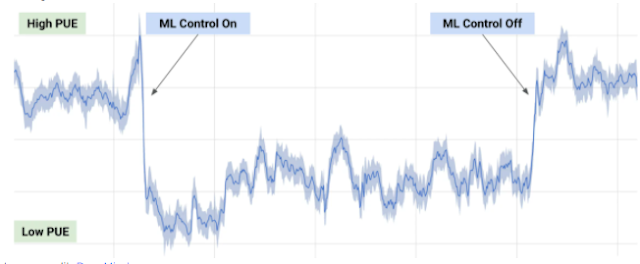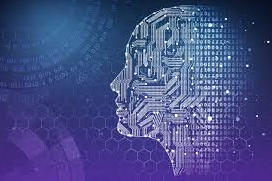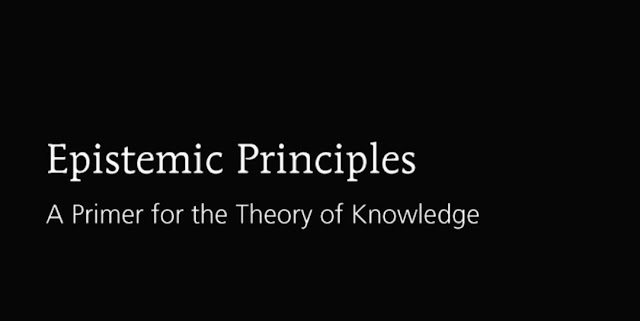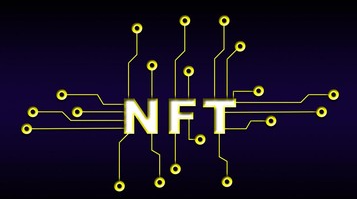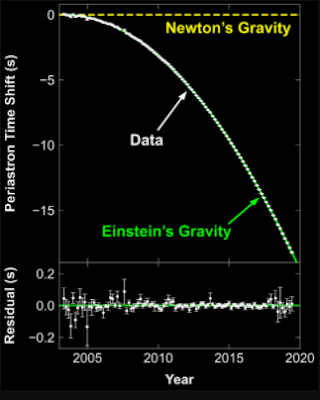Reviewed by : Indrawan Vpp
We often believe what we are told by our parents, friends, doctors, and news reporters. We often believe what we see, taste, and smell. We hold beliefs about the past, the present, and the future. Do we have a right to hold any of these beliefs? Are any supported by evidence? Should we continue to hold them, or should we discard some? These questions are evaluative. They ask whether our beliefs meet a standard that renders them fitting, right, or reasonable for us to hold. One prominent standard is epistemic justification.
Very generally, justification is the right standing of an action, person, or attitude with respect to some standard of evaluation. For example, a person’s actions might be justified under the law, or a person might be justified before God.
Epistemic justification (from episteme, the Greek word for knowledge) is the right standing of a person’s beliefs with respect to knowledge, though there is some disagreement about what that means precisely. Some argue that right standing refers to whether the beliefs are more likely to be true. Others argue that it refers to whether they are more likely to be knowledgeable. Still, others argue that it refers to whether those beliefs were formed or are held in a responsible or virtuous manner.
Because of its evaluative role, justification is often used synonymously with rationality. There are, however, many types of rationality, some of which are not about a belief’s epistemic status and some of which are not about beliefs at all. So, while it is intuitive to say a justified belief is a rational belief, it is also intuitive to say that a person is rational for holding a justified belief. This article focuses on theories of epistemic justification and sets aside their relationship to rationality.
In addition to being an evaluative concept, many philosophers hold that justification is normative. Having justified beliefs is better, in some sense, than having unjustified beliefs, and determining whether a belief is justified tells us whether we should, should not, or may believe a proposition. But this normative role is controversial, and some philosophers have rejected it for a more naturalistic, or science-based, role. Naturalistic theories focus less on belief-forming decisions—decisions from a subject’s own perspective—and more on describing, from an objective point of view, the relationship between belief-forming mechanisms and reality.
Regardless of whether justification refers to the right belief or responsible belief, or whether it plays a normative or naturalistic role, it is still predominantly regarded as essential for knowledge. This article introduces some of the questions that motivate theories of epistemic justification, explains the goals that a successful theory must accomplish, and surveys the most widely discussed versions of these theories.
Explaining Why Justification is Valuable
A third central aim of theories of justification is to explain why justification is epistemically valuable. Some epistemologists argue that justification is crucial for avoiding error and increasing our store of knowledge. Others argue that knowledge is more complicated than attaining true beliefs in the right way and that part of the value of knowledge is that it makes the knower better off. These philosophers are less interested in the truth-goal in its unqualified sense; they are more interested in intellectual virtues that position a person to be a proficient knower, virtues such as intellectual courage and honesty, openness to new evidence, creativity, and humility. Though justification increases the likelihood of knowledge under some circumstances, we may rarely be in those circumstances or may be unable to recognize when we are; nevertheless, these philosophers suggest, there is a fitting way of believing regardless of whether we are in those circumstances.
A minority of epistemologists reject any connection between justification and knowledge or virtue. Instead, they focus either on whether a belief fits into an objective theory about the world or whether a belief is useful for attaining our many diverse cognitive goals. An example of the former involves focusing solely on the causal relationship between a person’s beliefs and the world; if knowledge is produced directly by the world, the concept of justification drops out (for example, Alvin Goldman, 1967). Other philosophers, whom we might call relativists and pragmatists, argue that epistemic value is best explained in terms of what most concerns us in practice.
Debates surrounding these three primary aims inspire many others. There are questions about the sources of justification: Is all evidence experiential, or is some non-experiential? Are memory and testimony reliable sources of evidence? And there are additional questions about how justification is established and overturned: How strongly does a reason have to be before a belief is justified? What sort of contrary, or defeating, reasons can overturn a belief’s justification? In what follows, we look at the strengths and weaknesses of prominent theories of justification in light of the three aims just outlined, leaving these secondary questions to more detailed studies.
Justification and Knowledge
The type of knowledge primarily at issue in discussions of justification is the knowledge that a proposition is true or propositional knowledge. Propositional knowledge stands in contrast with knowledge of how to do something or practical knowledge. (For more on this distinction, see Knowledge.) Traditionally, three conditions must be met in order for a person to know a proposition—say, “The cat is on the mat.”
First, the proposition must be true; there must actually be a state of affairs expressed by the proposition in order for the proposition to be known. Second, that person must believe the proposition, that is, she must mentally assent to its truth. And third, her belief that the proposition is true must be justified for her. Knowledge, according to this traditional account, is justified true belief (JTB). And though philosophers still largely accept that justification is necessary for knowledge, it turns out to be difficult to explain precisely how justification contributes to knowing.
Historically, philosophers regarded the relationship between justification and knowledge as strong. In Plato’s Meno, Socrates suggests that justification “tethers” true belief “with chains of reasons why” (97A-98A, trans. Holbo and Waring, 2002). This idea of tethering came to mean that justification—when one is genuinely justified—guarantees or significantly increases the likelihood that a belief is true, and, therefore, we can tell directly when we know a proposition. But a series of articles in the 1960s and 1970s demonstrated that this strong view is mistaken; justification, even for true beliefs, can be a matter of luck. For example, imagine the following three things are true: (1) it is three o’clock, (2) the normally reliable clock on the wall reads three o’clock, and (3) you believe it is three o’clock because the clock on the wall says so. But if the clock is broken, even though you are justified in believing it is three o’clock, you are not justified in a way that constitutes knowledge. You got lucky; you looked at the clock at precisely the time it corresponded with reality, but its correspondence was not due to the clock’s reliability. Therefore, your justified true belief seems not to be an instance of knowledge. This sort of example is characteristic of what I call the Gettier Era (§6). During the Gettier Era, philosophers were pressed to revise or reject the traditional relationship.
In response, some have maintained that the relationship between justification and knowledge is strong, but they modify the concept of justification in an attempt to avoid lucky true beliefs. Others argue that the relationship is weaker than traditionally supposed—something is needed to increase the likelihood that a belief is a knowledge, and justification is part of that, but justification is primarily about responsible belief. Still, others argue that whether we can tell we are justified is irrelevant; justification is a truth-conducive relationship between our beliefs and the world, and we need not be able to tell, at least not directly, whether we are justified. The Gettier Era (§6) precipitated a number of changes in the conversation about justification’s relationship to knowledge, and these remain important to contemporary discussions of justification. But before we consider these developments, we address the DIJ.
The Value of Justification
Each of the theories of justification reviewed in this article presumes something about the value of justification, that is, about why justification is good or desirable. Traditionally, as in the case of Theatetus noted above, justification is supposed to position us to understand reality, that is, to help us obtain true beliefs for the right reasons. Knowledge, we suppose, is valuable, and justification helps us attain it. However, skeptical arguments, the influence of external factors on our cognition, and the influence of various attitudes on the way we conduct our epistemic behavior suggest that attaining true beliefs for the right reason is a forbidding goal, and it may not be one that we can access internally. Therefore, there is some disagreement as to whether justification should be understood as aimed at truth or some other intellectual goal or set of goals.
The Truth Goal
All the theories we have considered presume that justification is a necessary condition for knowledge, though there is much disagreement about what precisely justification contributes to knowledge. Some argue that justification is fundamentally aimed at truth, that is, it increases the likelihood that a belief is true. Laurence BonJour writes, “If epistemic justification were not conducive to truth in this way…then epistemic justification would be irrelevant to our main cognitive goal and of dubious worth” (1985: 8). Others argue that there are a number of epistemic goals other than the truth and that in some cases, truth need not be among the values of justification. Jonathan Kvanvig explains:
[I]t might be the case that truth is the primary good that defines the theoretical project of epistemology, yet it might also be the case that cognitive systems aim at a variety of values different from the truth. Perhaps, for instance, they typically value well-being, or survival, or perhaps even reproductive success, with truth never really playing much of a role at all. (2005: 285)
Given this disagreement, we can distinguish between what I will call the monovalent view, which takes truth as the sole, or at least fundamental, the aim of justification, and the polyvalent view (or, as Kvanvig calls it, the plurality view), which allows that there are a number of aims of justification, not all of which are even indirectly related to truth.
Alternatives to the Truth Goal
One motive for preferring the monovalent view is that, if truth is not the primary goal of justification—that is, it connects belief with reality in the right way—then one is left only with goals that are not epistemic, that is, goals that cannot contribute to knowledge. The primary worry is that, in rejecting the truth goal, one is left with pragmatism. In response, those who defend polyvalence argue that, in practice, there are other cognitive goals that are (1) not merely pragmatic, and (2) meet the conditions for successful cognition. Kvanvig explains that “not everyone wants knowledge…and not everyone is motivated by a concern for understanding. … We characterize curiosity as the desire to know, but small children lacking the concept of knowledge display curiosity nonetheless” (2005: 293). Further, much of our epistemic activity, especially in the sciences, is directed toward “making sense of the course of experience and having found an empirically adequate theory” (ibid., 294). Such goals can be produced without appealing to the truth at all. If this is right, justification aims at a wider array of cognitive states than knowledge.
Another argument for polyvalence allows that knowledge is the primary aim of justification but that much more is involved in justification than truth. The idea is that, even if one were aware of belief-forming strategies that are conducive to truth (following the evidence where it leads; avoiding fallacies), one might still not be able to use those strategies without having other cognitive aims, namely, intellectual virtues. Following John Dewey, Linda Zagzebski says that “it is not enough to be aware that a process is reliable; a person will not reliably use such a process without certain virtues” (2000: 463). As noted above, virtue responsibilities allow that the goal of having a large number of true beliefs can be superseded by the desire to create something original or inventive. Further still, following strategies that are truth-conducive under some circumstances can lead to pathological epistemic behavior. Amélie Rorty, for example, argues that belief-forming habits become pathological when they continue to be applied in circumstances no longer relevant to their goals (Zagzebski, ibid., 464). If this argument is right, then truth is, at best, an indirect aim of justification, and intellectual virtues like openness, courage, and responsibility may be more important to the epistemic project.
Objections to the Polyvalent View
One response to the polyvalent view is to concede that there are apparently many cognitive goals that fall within the purview of epistemology but to argue that all of these are related to truth in a non-trivial way. The goal of having true beliefs is a broad and largely indeterminate goal. According to Marian David, we might fulfill it by believing a truth, by knowing a truth, by having justified beliefs, or by having intellectually virtuous beliefs. All of these goals, argues David, are plausibly truth-oriented in the sense that they derive from, or depend on, a truth goal (David 2005: 303). David supports this claim by asking us to consider which of the following pairs is more plausible:
- A1. If you want to have TBs [true beliefs] you ought to have JBs [justified beliefs].
- A2. We want to have JBs because we want to have TBs.
- B1. If you want to have JBs you ought to have TBs.
- B2. We want to have TBs because we want to have JBs. (2005: 303)
David says, “[I]t is obvious that the A’s [sic] are way more plausible than the B’s. Indeed, initially one may even think that the B’s have nothing going for them at all, that they are just false” (ibid.). This intuition, he concludes, tells us that the truth-goal is more fundamental to the epistemic project than anything else, even if one or more other goals depend on it.
Almost all theories of epistemic justification allow that we are fallible, that is, that our justified beliefs, even if formed by reliable processes, may sometimes be false. Nevertheless, this does not detract from the claim that the aim of justification is true belief, so long as it is qualified as true belief held in the right way.
Rejections of the Truth Goal
In spite of these arguments, some philosophers explicitly reject the truth goal as essential to justification and cognitive success. Michael Williams (1991), for example, rejects the idea that truth even could be an epistemic goal when conceived of as “knowledge of the world.” Williams argues that in order for us to have knowledge of the world, there must be a unified set of propositions that constitute knowledge of the world. Yet, given competing uses of terms, vague domains of discourse, the failure of theoretical explanations, and the existence of domains of reality we have yet to encode into a discipline, there is not a single, unified reality to study. Williams argues that because of this, we do not necessarily have knowledge of the world:
All we know for sure is that we have various practices of assessment, perhaps sharing certain formal features. It doesn’t follow that they add up to a surveyable whole, to a genuine totality rather than a more or less loose aggregate. Accordingly, it does not follow that a failure to understand the knowledge of the world with proper generality points automatically to an intellectual lack. (543)
In other words, our knowledge is not knowledge of the world—that is, access to a unified system of true beliefs, as the classical theory would have it. It is knowledge of concepts in theories putatively about the world, constructed using semantic systems that are evaluated in terms of other semantic systems. If this is, in fact, all there is to know, then truth, at least as classically conceived, is not a meaningful goal.
Another philosopher who rejects the true goal is Stephen Stich (1988; 1990). Stich argues that, given the vast amount of disagreement among novices and experts about what counts as justification, and given the many failures of theories of justification to adequately ground our beliefs in anything other than calibration among groups of putative experts, it is simply unreasonable to believe that our beliefs track anything like the truth. Instead, Stich defends pragmatism about justification, that is, justification just is practically a successful belief; thus, the truth cannot play a meaningful role in the concept of justification.
A response to both views might be that, in each case, the true goal has not been abandoned but simply redefined or relocated. Correspondence theories of truth take it that propositions are true just in case they express the world as it is. If the world is not expressible propositionally, as Williams seems to suggest, then this type of truth is implausible. Nevertheless, a proposition might be true in virtue of being an implication of a theory, and so, for example, we might adopt a more semantic than the ontological theory of truth, and it is not clear whether Williams would reject this sort of truth as the aim of epistemology.
Similarly, someone might object to Stich’s treating pragmatism as if it is not truth-conductive in any relevant sense. If something is useful, it is true that it is useful, even in the correspondence sense. Even if evidence does not operate in a classical representational manner, the success of beliefs in accomplishing our goals is, nevertheless, a truth goal. (See Kornblith 2001 for an argument along these lines.
Conclusion
Epistemic justification is an evaluative concept about the conditions for right or fitting belief. A plausible theory of epistemic justification must explain how beliefs are justified, the role justification plays in knowledge, and the value of justification. A primary motive behind theories of justification is to solve the dilemma of inferential justification. To do this, one might accept the inferential assumption and argue that justification emerges from a set of coherent beliefs (internalist coherentism) or an infinite set of beliefs (infinitism). Alternatively, one might reject the inferential assumption and argue that justification derives from basic beliefs (internalist foundationalism) or through reliable belief-forming processes (externalist reliabilism). If none of these views is ultimately plausible, one might pursue alternative accounts. For example, virtue epistemology introduces character traits to help avoid problems with these classical theories. Other alternatives include hybrid views, such as Conee and Feldman’s (2008), mentioned above, and Susan Haack’s (1993) foundherentism.
Reference
- Aikin, S. 2009. “Don’t Fear the Regress: Cognitive Values and Epistemic Infinitism.” Think, 23, 55-61.
- Aikin, S. F. 2011. Epistemology and the Regress Problem. London: Routledge.
- Alston, W. P. 1988. “An Internalist Externalism,” Synthese, 74, 265-283.









